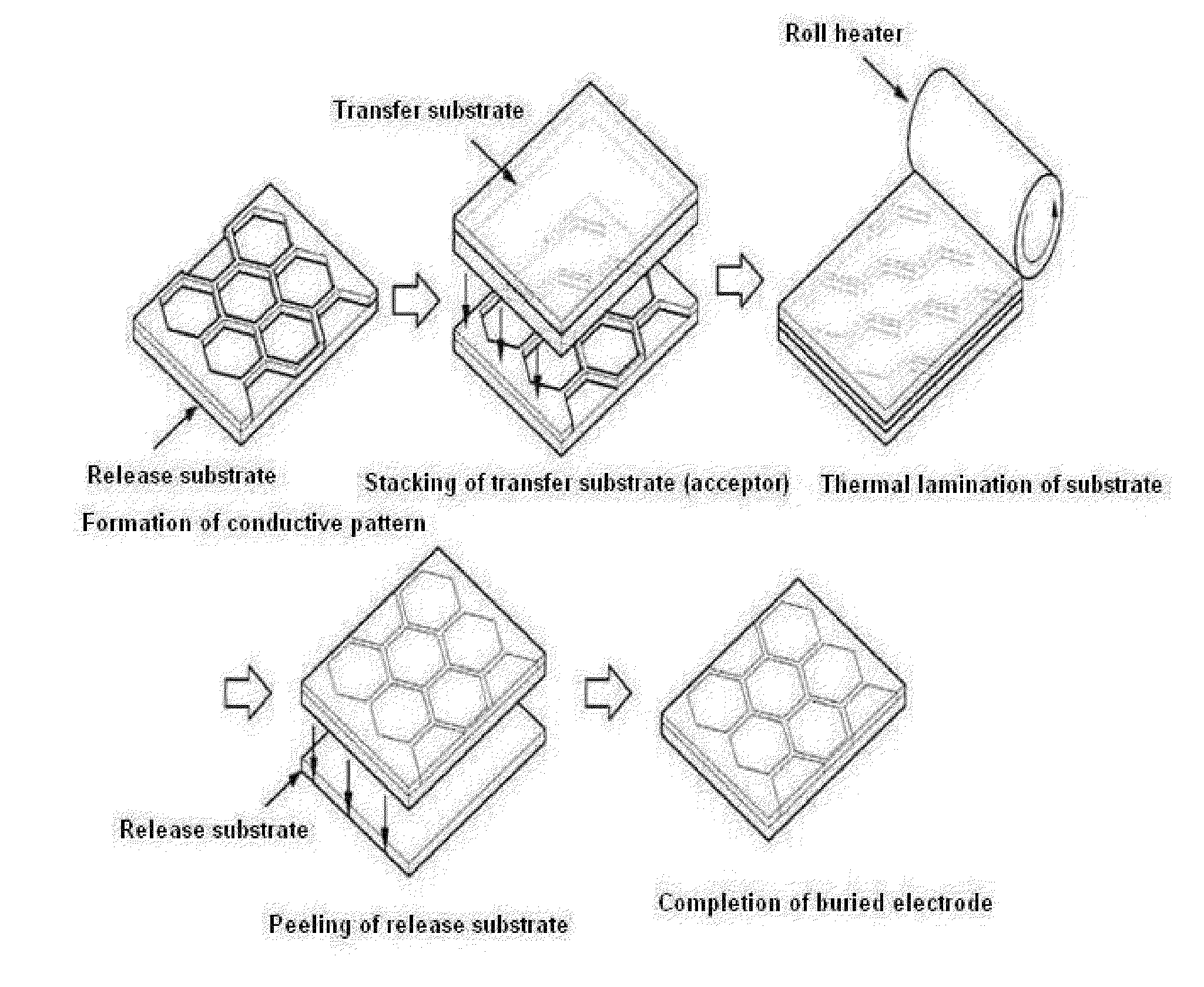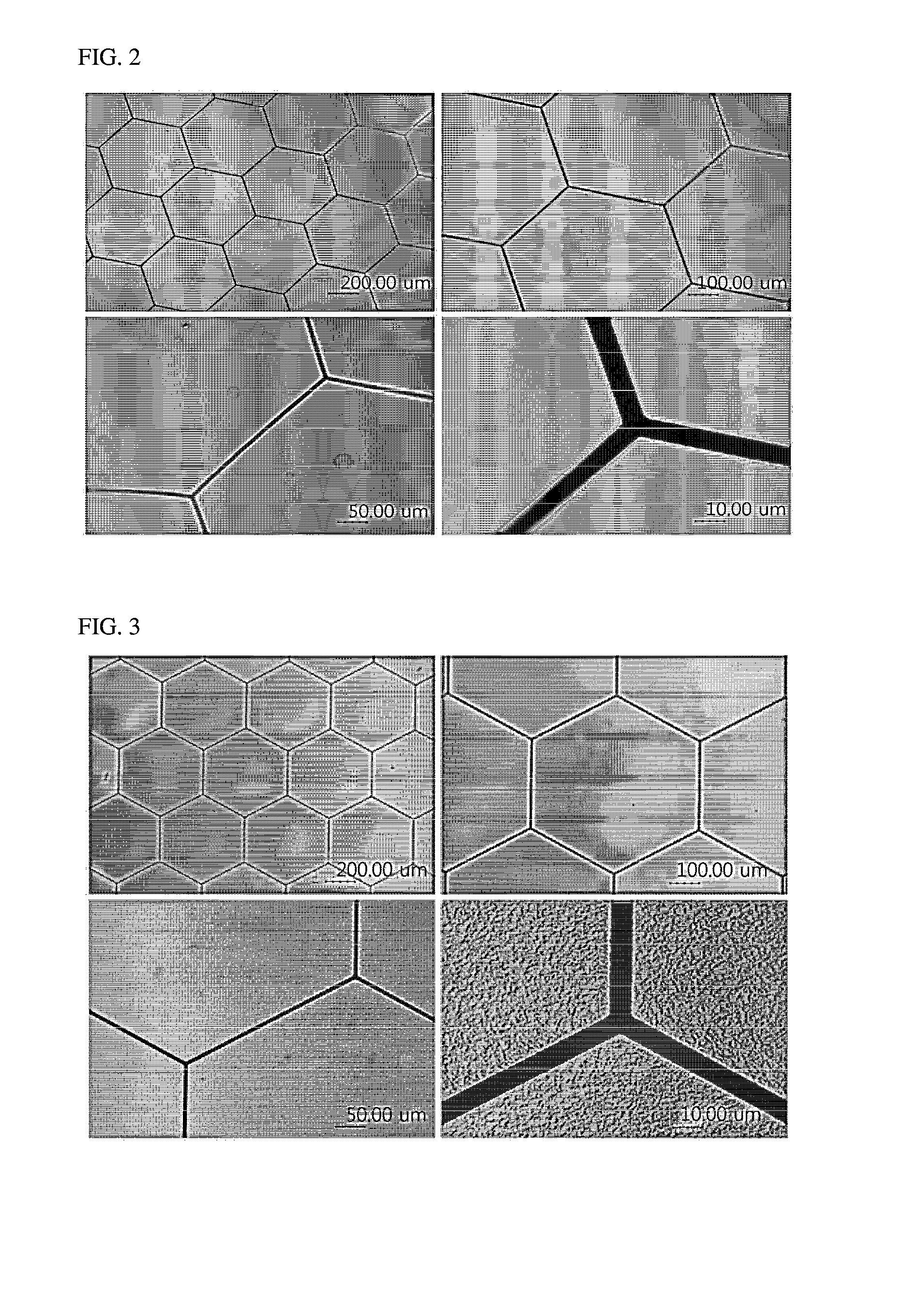Method for manufacturing flexible-embedded electrode film using heat-pressure welding transcription
a flexible electrode and transcription technology, applied in the direction of insulating bodies, insulating supports, conductive layers on insulating supports, etc., can solve the problems of many complicated wires on the board, wiring defects may be incurred during the manufacturing process, and electrical shorts between circuit wires, etc., to achieve easy wiring formation, low resistance, and simple process
- Summary
- Abstract
- Description
- Claims
- Application Information
AI Technical Summary
Benefits of technology
Problems solved by technology
Method used
Image
Examples
example 1
[0100]A PET substrate having a thickness of 180 μm was coated with a 5 mm thick polydimethylsiloxane (PDMS) (SYLGARD 184, available from Dow Corning Corp.) solution (mixing ratio 1:9) and cured at 70° C. for 6 hr, thus preparing a release-substrate. A 150 nm thick Al foil was deposited on the release surface of the release-substrate using an e-beam deposition machine (base pressure: 8×10−7 torr, working pressure: 5×10−5 torr, 0.1 Å / s).
[0101]Using an AZ 1518 photoresist, coating, drying, mask photoexposure and development were performed, thus forming a pattern on the Al deposited film.
[0102]The formed resist pattern was subjected to wet etching (a phosphoric acid-based Al etching solution) or dry etching (ICP-RIE), thus forming an Al electrode pattern. Based on observation by an optical microscope, the Al electrode pattern was formed as illustrated in FIG. 2.
[0103]On the Al electrode pattern, a 250 μm EVA (Ethylene Vinyl Acetate) film (Pouch laminating film, available from GMP Ltd.) ...
example 2
[0105]A flexible conductive buried electrode film was manufactured in the same manner as in Example 1, with the exception that a 180 μm thick PET substrate was spin-coated with a 1˜5 wt % diluted fluorinated silane (OPTOOL™, available from Daikin Industries, LTD.) solution and dried at 120° C. for 30 min, thus preparing a release-substrate.
PUM
| Property | Measurement | Unit |
|---|---|---|
| thickness | aaaaa | aaaaa |
| thickness | aaaaa | aaaaa |
| width | aaaaa | aaaaa |
Abstract
Description
Claims
Application Information
 Login to View More
Login to View More - R&D
- Intellectual Property
- Life Sciences
- Materials
- Tech Scout
- Unparalleled Data Quality
- Higher Quality Content
- 60% Fewer Hallucinations
Browse by: Latest US Patents, China's latest patents, Technical Efficacy Thesaurus, Application Domain, Technology Topic, Popular Technical Reports.
© 2025 PatSnap. All rights reserved.Legal|Privacy policy|Modern Slavery Act Transparency Statement|Sitemap|About US| Contact US: help@patsnap.com



